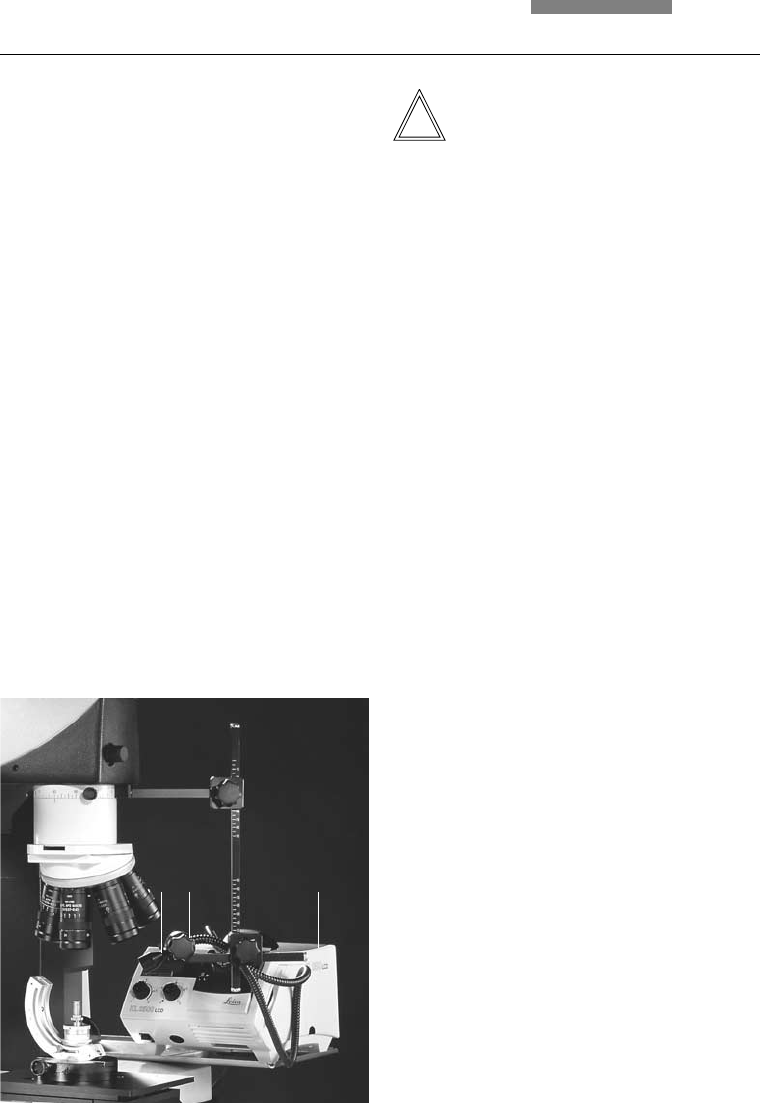
26
8. Operation
8.13 Oblique Incident Illumination
The light is guided to the incident light object by
the cold light illuminator KL2500 (25.3) and the
double-armed, flexible light guide with 4.5 mm
diameter. Insert the light guide ends into the left
and right receptacles on the special articulated
arm (25.2). If applicable, attach and tighten the
focusing optics (25.1).
The light bundle can be rotated and tilted in ev-
ery direction. The scales on the movable articu-
lated arms can be used to adjust the illumination
accurately. The cold light source KL2500 is used
for fine adjustment of the light intensity.
It can be adjusted electrically and mechanically.
For electrical light control, the color tempera-
ture is changed. For mechanical light control,
the color temperature remains constant.
Fig. 25 Oblique incident illumination
1 Focusing optics
2 Receptacle for light guide with 4.5 mm diameter
3 Cold light illuminator KL 2500
12 3
Note:
The LED (20.9) or (20.11) is green if the corre-
sponding lamp is operated in standard mode. If
the LED is red, the bulb life of the lamp is re-
duced.
The KL2500 can be controlled using the rotary
knobs (20.8 and 20.12).
Please make sure that the KL2500 is connected
with the included cables on the rear side of the
stand.
The light and shadow effect of the oblique illu-
mination yields very pronounced surface reliefs
of bullet and shell casing traces, toolmarks, as
well as other form, material, and textile texture
traces. For reflection protection, a polarization
filter can be attached to the focusing optics.
8.14 Coaxial Incident Illumination
The coaxial incident illuminator is mounted on
the macroscope carrier. It can be retrofitted at
any time. The light is guided to the incident light
object by the cold light illuminator KL2500 (25.3)
and the double-armed, flexible light guide with
9 mm diameter. Insert the light guide ends into
the left and right receptacles of the coaxial illu-
mination (26.3).
To use the coaxial incident illuminator, it must
be inserted completely. When switching to an-
other illumination method, the coaxial incident
illumination must be pulled out of the beam path
(to the first stop).


















